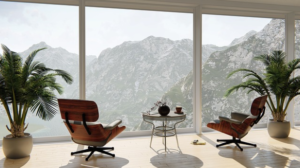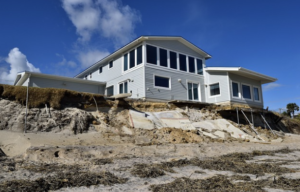We believe that buildings like an Immerst OASys are leading the way in sustainable architecture. Sustainable architecture is a phrase that is often used in tandem with green building and with good reason. The aim of green building is to build in such a way as to minimize the impact of a project on the natural world through efficient use of materials and resources while enhancing the occupants’ experience of interacting with the building. The World Green Building Council lists features of a green building as:
Efficient use of energy, water and other resources
Use of renewable energy, such as solar energy
Pollution and waste reduction measures, and the enabling of re-use and recycling
Good indoor environmental air quality
Use of materials that are non-toxic, ethical and sustainable
Consideration of the environment in design, construction and operation
Consideration of the quality of life of occupants in design, construction and operation
A design that enables adaptation to a changing environment

Engineering with materials that are sustainable and using adaptive design, sustainability in architecture is actually a goal of green building. And considering the UN’s most recent climate report, we are not surprised that this is top of mind for many designers. Nowhere is this more critical than when building by the shore.

Seeking time by the water, whether for a week’s vacation or for a lifetime, has myriad benefits but building in a wet environment has its challenges too. For any project “sustainability in architecture must take into account the natural resources and conditions at the site, incorporating these into the design wherever feasible” (“Sustainability in Architecture,” 2017, ¶ 2) Rising sea levels, onshore flooding and beach erosion suggest that it is time to consider alternatives to traditional shoreline building sites.
The answer is creativity, flexibility and sustainability. An OASys can take advantage of untapped blue space in areas that need affordable housing or have issues related to traditional waterfront building. Green building materials can be used to accommodate various conditions and the option to make a unit portable is the ultimate in sustainable design.
As naval architects and engineers building Spirit-of-Tradition yachts, we are masters of the custom process. We know how to work with clients to achieve their goals, within a budget, in water’s challenging, yet viable, environment. Homes, municipal buildings and even pop-up venues can all be made to float. Maximizing the positive while minimizing the negative is especially crucial within the confines of boat design. Respecting and utilizing the water in equal measure. We understand the translation, those tenets of vessel design and construction implemented into larger floating structures as a solution to survive, to work and to thrive in a changing climate. Most of all, we believe it is a sustainable solution for accessing and preserving the best place to be: on the water.

To meet the evolving needs of coastal environments with sustainable long term solutions we need partners – city planners, architects, developers, coastal visionaries, sustainable solutionists. Our OASys platforms can only be brought to life and scaled through careful coordinated efforts with other experts.
If you or other sustainable leaders within your personal network would like to explore possible floating solutions together, please share this content or reach out to us directly by clicking here : https://stephenswaring.com/immerst/ We’ll arrange a short consultative phone call to discuss your needs and explore partnership opportunities.
Please take the time to learn more and draw inspiration from the following examples:
Making Change
https://www.deccanchronicle.com/nation/current-affairs/230819/homes-that-build-hopes.html